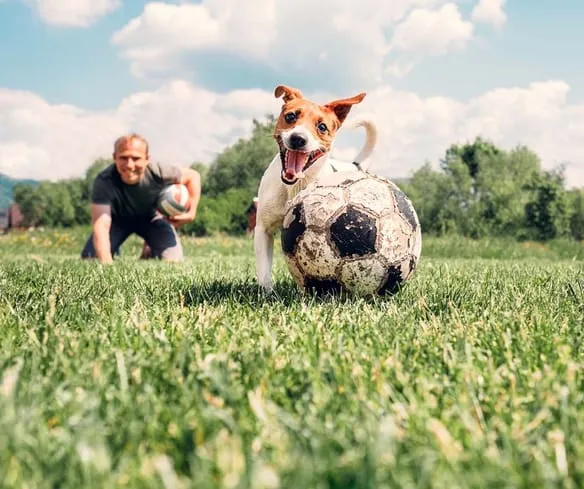ACL Injury Repair Using the Suture Technique
Your four-legged canine athlete deserves to live a pain-free and active life! If your dog has been limping or appears to be in pain, then we encourage you to call us and schedule an appointment with our orthopedic veterinarian in Omaha. We may find that your dog is suffering from cranial cruciate disease, which often requires surgery.

What does it mean if My Dog Has a CrCL/ACL Injury?
Your dog's knees are stabilized by a ligament called the cranial cruciate ligament. It's very similar to the ACL in a human knee. Cranial cruciate disease is common and is hallmarked by a gradual breakdown and degradation of the CrCL, leading to pain, dysfunction, and knee instability. A torn or damaged CrCL can also lead to other complications including meniscal tear, arthritis, and hip pain.
When Our Orthopedic Veterinarian in Omaha Chooses the Suture Technique for a CrCL/ACL Injury
In most cases, surgery is the best option for resolving a CrCL/ACL injury in dogs. There are several approaches that our orthopedic veterinarian in Omaha can choose for your dog. We take the time and care to evaluate your dog and go over with you the most clinically indicated solution.
The suture technique is one approach that essentially serves to "replace" the damaged cranial cruciate ligament with a suture-type implant that serves to stabilize the knee in the same way a healthy CrCL would. There are more than one way to perform the suture technique. The most common is known as the extra-capsular suture stabilization (Ex-Cap or fishing line suture). This involves the surgical placement of a monofilament nylon suture along the outside of the joint (but oriented in a similar placement as the CrCL). The ultimate goal is that scar tissue will develop around the suture, which maximizes the stability of the knee.
The suture technique is generally the preferred way to surgically repair a ruptured CrCL if your dog:
Is small (ideally less than 40 lb) Is older Is relatively inactive or sedentary
This technique is also less expensive compared to the other main approach for CrCL repair, called the plate technique.
What Can I Expect For My Dog's CrCL/ACL Recovery After Surgery?
It's extremely important that you restrict your dog's activity level for around four months following its surgical procedure. This is to protect the healing knee and optimize the CrCL/ACL recovery after surgery. Our vet team will take the time necessary to go over with you all your questions about the recovery period, when to follow up with us, and how to maximize your pet's comfort at home.
Contact Our Orthopedic Veterinarian near Omaha for Help Today!
If your pet is struggling with a CrCL/ACL injury and may require surgery, then you want to find an orthopedic veterinarian near Omaha who understands the unique needs of your animal. Our team is fully committed to providing the most advanced, innovative, and expert surgical services for their canine patients in need. To schedule a consultation today, contact Sirius Veterinary Orthopedic Center at 402-934-1332.
